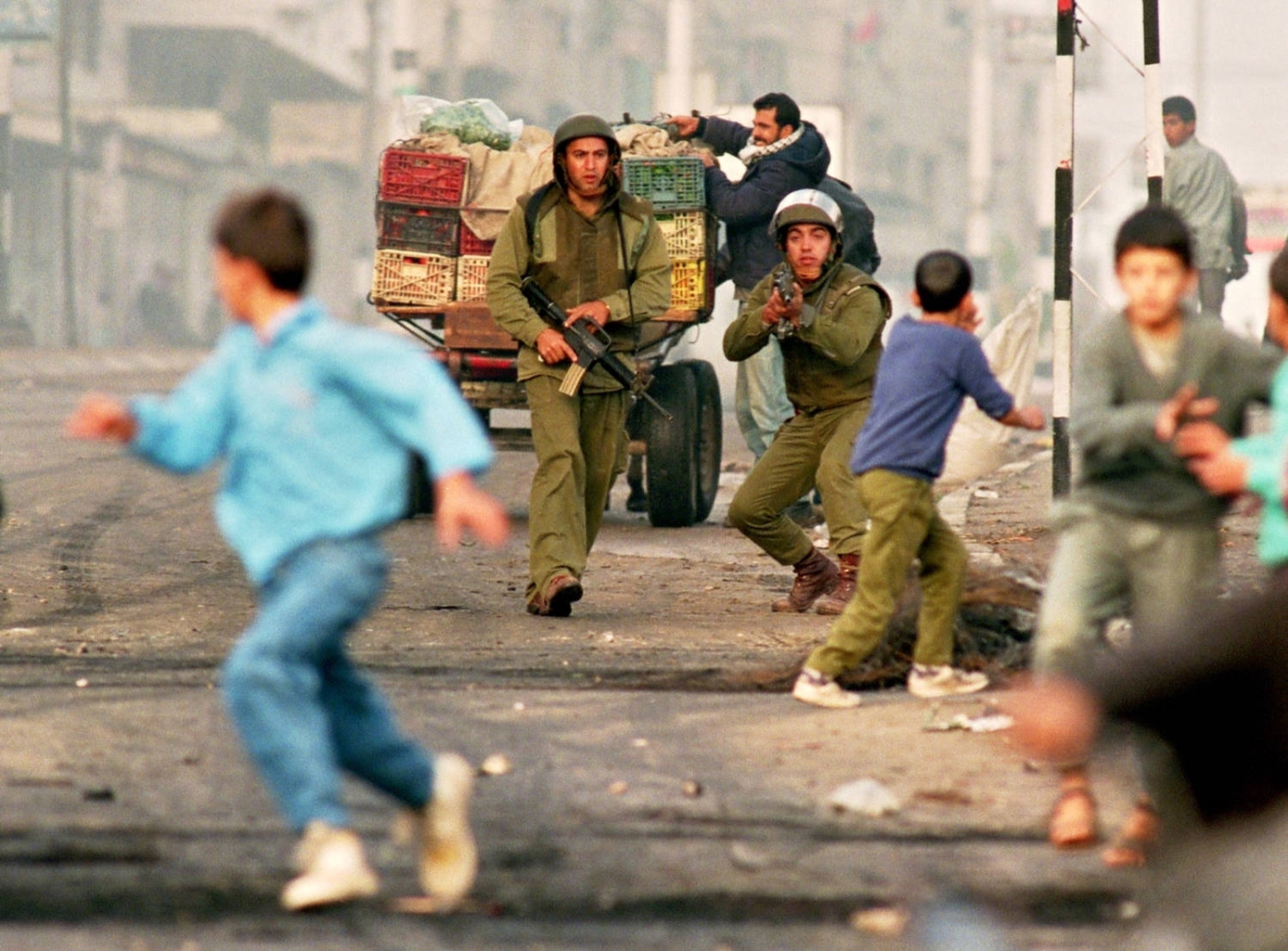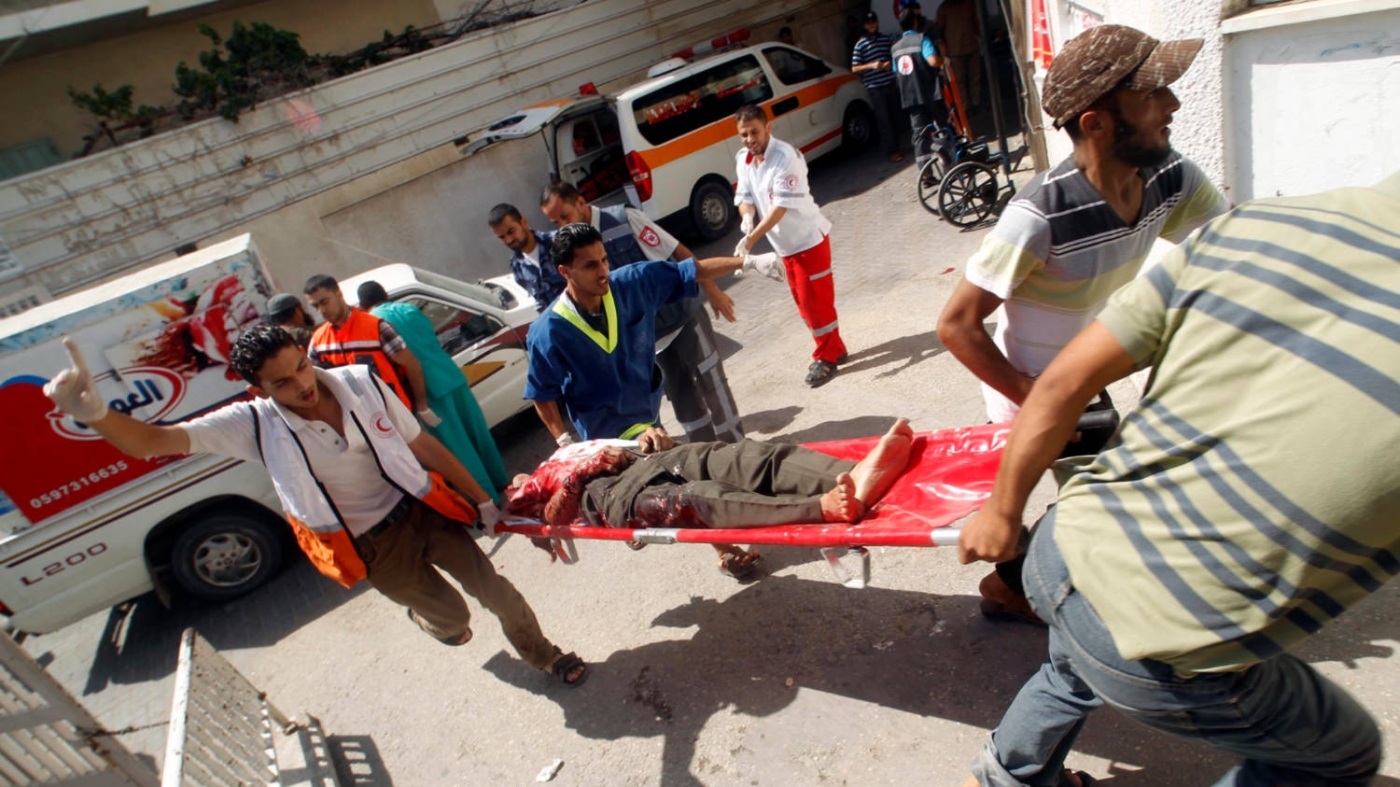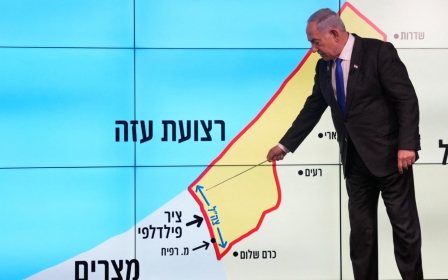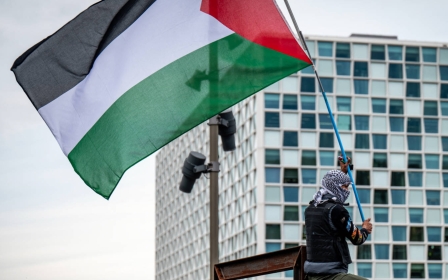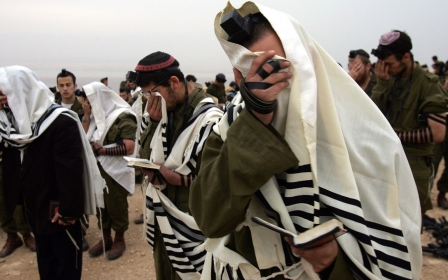What is the Hannibal Directive and why is it controversial?

The Hannibal Directive is a command issued by the Israeli military. Its purpose is to prevent the kidnapping of Israeli soldiers by using heavy fire to stop the abductors – even if that may harm or kill those being taken.
It has been used during Israeli operations during the past two decades but has come under scrutiny since the 7 October attacks and Israel's war on Gaza.
An investigation by the Israeli newspaper Haaretz in July 2024 reported that the Israeli army used the directive when Hamas attacked southern Israel, killing an estimated 1,139 people.
More than 250 soldiers, civilians and foreign nationals were also kidnapped and taken into Gaza following the attack.
But use of the directive, it is alleged, resulted in the deaths of Israeli civilians and soldiers.
New MEE newsletter: Jerusalem Dispatch
Sign up to get the latest insights and analysis on Israel-Palestine, alongside Turkey Unpacked and other MEE newsletters
Here, Middle East Eye looks at the history and use of the directive.
Why was the Hannibal Directive created?
The directive was initially written in 1986 by the Israeli army’s Northern Command. It in part reflects how historically Israel defaults to military action over negotiation to secure the release of Israeli hostages, as during the Ma'alot massacre in May 1974 and the Entebbe hijacking of July 1976.
It was prompted after Israeli soldiers were abducted and taken into Lebanon during the 1980s, and the high numbers of Palestinian prisoners freed to secure their release.
In June 1982, Israel invaded Lebanon. That summer, the Popular Front for the Liberation of Palestine (PFLP), which was founded by Ahmed Jibril, managed to kidnap several Israeli soldiers in separate incidents.
In February 1985, Israel, under the national unity government led by Shimon Peres, began pulling out of Lebanon. Three months later, after months of negotiations, the Jibril Agreement was agreed with the PFLP.
Three Israeli soldiers - Yosef Grof, Nissim Salem, and Hezi Shai - would be freed in exchange for 1,15o Palestinian prisoners held in Israeli prisons. The Palestinian prisoners included Sheikh Ahmed Yassin, the founder of Hamas.
What was the reaction to the Jibril Agreement?
The Israeli government passed the deal with almost no opposition, but it sparked a public debate about the heavy price paid by the state due to the release of so many Palestinian prisoners.
Benjamin Netanyahu, who was Israel's UN ambassador at that time, wrote later in his 1993 book A Place Under the Sun: "From the outset, I saw the Jibril deal as a fatal blow to all of Israel's efforts to consolidate an international front against terrorism. How can Israel preach to the United States and the West to adopt a policy of non-surrender to terrorism when it itself capitulates so shamefully?"
And Yuval Diskin, who at the time was a district officer in the Shin Bet and would later become head of the Shin Bet, said in 2014: "The first intifada broke out to a large extent as a result of the release of the prisoners in the Jibril deal.”
In February 1986, Israeli soldiers Rahamim Alsheikh and Yossi Fink were taken by Hezbollah in southern Lebanon. Their remains were returned in 1996 under a deal which also saw the release of 22 prisoners.
The directive was drawn up a few months later by three members of the Northern Command: Yossi Peled, the then-chief; Gabi Ashkenazi, a commanding general officer; and Yaakov Amidror, a commanding intelligence officer.
Peled told Haaretz in 2003 that the "kidnapping of soldiers was a hot topic in the [Northern] command, and there was an oral instruction at the time that said that one should try to prevent kidnapping at all costs”.
What is the text of the Hannibal Directive?
The text of the directive has never been published by the Israeli army but is believed to have evolved several times over the years.
Initially it was communicated primarily by word of mouth among soldiers and their leaders. Its essential principles are
- During the kidnapping of Israeli military personnel, the main objective is to rescue the soldier, even if they are harmed during the rescue.
- Small arms fire should be used to stop the kidnappers, for example by firing at their vehicle. If that fails, take out the kidnappers themselves, for example by sniper, even if that brings harm to the abducted soldier.
- Do everything to stop the vehicle. Do not allow it to escape.
According to Asa Kasher, who wrote the Israeli army's code of ethics, the directive amounted to: "A dead soldier is better than a kidnapped soldier."
It was only during the early 2000s that Israeli military censorship allowed the directive’s existence to be published in the country’s media, since when it has been discussed more widely.
Why is it called the Hannibal Directive?
Amidror, one of the writers of the directive, said that the name of the directive "was chosen at random and has no real meaning”.
But in 2003, Uri Avnery, an Israeli journalist, reported that the name was chosen deliberately.
Hannibal was a Carthaginian general and statesman from what is now modern-day Tunisia who fought the Romans during the Second Punic War. Most famously, he marched his forces including war elephants over the Alps to strike against Rome. Hannibal took his own life in 181 BCE to avoid falling into Roman hands.
When was the Hannibal Directive first used?
In February 2000, an Israeli army patrol in the Shebaa Farms region near the Israel-Lebanese border was attacked by Hezbollah fighters. Three soldiers were kidnapped.
The Israeli forces who pursued the kidnappers applied the directive and shot at the Hezbollah vehicles. Later Yossi Refalov, the commander who gave the order to open fire said that when he saw the jeep, he realised that the soldiers were no longer alive.
The bodies of the soldiers were returned to Israel in a deal in 2004, in exchange for at least 430 prisoners and the remains of 59 Lebanese killed by Israel.
How was the Hannibal Directive used on 7 October?
Israel’s military was unprepared for the Hamas dawn attack on 7 October, which came at the end of the Simchat Torah holiday. The Israeli army and air force scrambled to react. Nof Erez, a former senior Israeli Air Force official, said that a "mass Hannibal Directive” was employed that day.
“There was crazy hysteria,” one source told Haaretz. “No one had a clue about the number of people kidnapped or where army forces were.”
The Erez Crossing in northern Gaza was attacked several times by the army, as was the Re'im Army Base, headquarters of the Israeli army's Gaza Division in southern Israel. In both locations, Israeli soldiers were present at the time of the attacks by their own forces: the army has said it does not know whether it killed its own soldiers.
Heavy Israeli fire was also aimed at a fence between Israel and Gaza. At first, soldiers were instructed that "no vehicles should be allowed to re-enter the Gaza Strip”, according to a security source who spoke with Haaretz. Then an order was issued to "turn the fence area into an extermination zone". At night, an order was given to "open live fire at anyone approaching the area [the fence]”.
In April 2024, the Israeli army published its findings regarding the death of Israeli hostage Efrat Katz. The report stated: "During the battles and the airstrikes, one of the combat helicopters that took part in the fighting fired at a vehicle containing terrorists - and which, in retrospect… also contained hostages… most of the terrorists operating the vehicles were killed as a result of the shooting, and apparently Efrat Katz."
The Israeli army also fired at a house at kibbutz Be'eri, where Hamas fighters were holding 15 Israeli hostages. Barak Hiram, a brigadier general, said in an interview with the New York Times in December that he ordered tank shells to be fired at the house as negotiations were now over. “Break in, even at the cost of civilian casualties.” Only two hostages survived.
In June, a report by the UN Independent International Commission of Inquiry (COI) said that at least 14 Israelis were likely intentionally killed by the Israeli army.
"One woman was killed by [Israeli] helicopter fire while being abducted from Nir Oz to Gaza by militants," said the report, referring to one of the Kibbutzim from which people were abducted by Palestinian fighters.
Has the Hannibal Directive been used in any other incidents?
The most prominent previous occasion when the directive was used was during the war between Israel and Hamas in summer 2014.
On 1 August, after Israeli soldier Hadar Goldin was kidnapped by Hamas, it was decided to employ the directive. In an attempt to prevent the kidnapping, the Israeli army directed heavy fire and bombardment onto Rafah, killing 135 Palestinians, including 75 children. The day was later known as “Black Friday”.
A subsequent joint report by Amnesty International and Forensic Architecture accused Israel of committing a war crime. Goldin's body is still held by Hamas.
In June 2006, Israeli soldier Gilad Shalit was kidnapped during a Hamas raid in Kerem Shalom close to southern Gaza. A military report stated that an hour passed from the initial attack until the activation of the Hannibal Directive, leading to its failure. In October 2011, Shalit was exchanged for 1,027 Palestinian prisoners including Hamas leader Yahya Sinwar.
In 2009 the Hannibal Directive was used during Israel's Operation Cast Lead on Gaza. Israeli troops fired on a house which contained the body of a dead comrade to prevent it being taken as leverage in future hostage negotiations.
In another case, in December 2009, Yakir Ben-Melech was shot dead at the Erez Crossing after he attempted to enter Gaza. He had been treated for mental illness before his death and was, according to family, trying to free Gilad Shalit.
What has been the reaction in Israel to the Hannibal Directive?
The morality of the directive has been debated in Israel since its existence was revealed.
In 2003, Chaim Avraham, the father of Bani, one of the soldiers killed in 2000 during an attempted kidnapping, told Haaretz: "It is shocking to think that a soldier executes his friend. It is true that in kidnappings there is a difficult dilemma in terms of the price that the state will pay. But as difficult as it is, I prefer a captive son to a dead son.”
Kasher told the newspaper Maariv in 2015 that, during Operation Protective Edge, a soldier was killed because the Hannibal Directive had been applied wrongly. "The Hannibal procedure says in a highly classified document that if your action will definitely kill the soldier then you must not activate the procedure.
'The value of the soldier's life exceeds the value of thwarting the kidnapping," Kasher added. "At the end of the procedure there are also the instructions to open fire and they specifically say, and I am ready to quote from one of the versions: 'The value of the soldier's life exceeds the value of thwarting the kidnapping.''
In 2016, Gadi Eisenkot then the army’s chief of staff, ordered the directive be scrapped and rewritten, following public debate.
According to an investigation by Ronen Bergman and Yoav Zeyton in Ynet, on 7 October one of the army orders was: "The top priority for an attack is the area of defense and prevention of attacks, the withdrawal of enemy forces into the Gaza Strip must not be allowed, and any such attempt must be stopped at all costs."
The journalists claim that this order indicates the deployment of the directive, as it is very similar to other versions of the directive.
Following 7 October, Yagil Levy, an associate professor in the Department of Sociology, Political Science and Communication at the Open University of Israel, wrote in Haaretz: "The government's decision to attack Gaza despite the presence of hostages at the bombed sites can be considered an extension of the 'Hannibal' directive – that is, an attempt to thwart the continuation of captivity even at the cost of endangering the lives of the hostages."
But some in Israel still support the directive.
In their 2013 book Jewish Military Ethics, rabbis Elazar Goldstein and Ido Rechnitz interpreted the Israeli army’s code of ethics based on Jewish law (the volume has no official standing). They concluded: "A military operation intended to rescue the abducted soldier or harm the kidnappers is permitted according to Jewish law, despite the fear that the operation will harm the abducted soldier.”
In 2014, Israeli political commentator and journalist Amit Segal wrote about the directive in the aftermath of Black Friday: "In the Shalit deal, Israel surrendered to Hamas' ratio: one Israeli is worth 1,000 Palestinians. You can support it, you can oppose it, but you can't hold the stick at both ends.
"Did you agree that one Israeli life is worth the life of 1,000 Palestinians? Then complain that 150 Palestinians were killed in the pursuit of one hostage."
Middle East Eye delivers independent and unrivalled coverage and analysis of the Middle East, North Africa and beyond. To learn more about republishing this content and the associated fees, please fill out this form. More about MEE can be found here.



